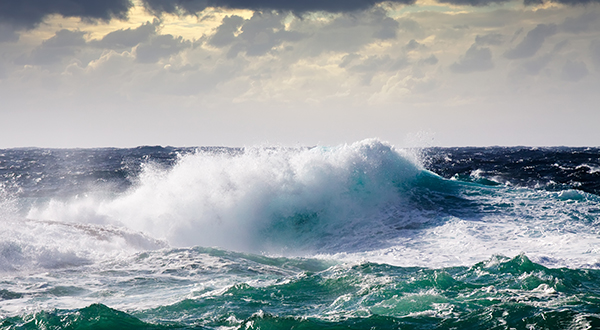Recent reports say operators are directing ships through the Straits of Magellan and round The Cape of Good Hope in order to save on canal dues amid the suppressed fuel prices. In this regard, the UK Club issued a reminder to Masters of the considerations that should be taken into account when operating in areas of adverse weather conditions.
When considering whether it is safe to allow crew on deck in conditions of heavy weather the Master must first ask himself whether the work (or task) to be carried out is necessary to preserve the safe operation of the ship. If the answer is “no” then it may be sensible to delay this work until the vessel reaches calmer waters.
Meanwhile, Masters should take into consideration the Code of Safe Working Practices for Merchant Seaman (CoSWP), the internationally accepted authority on safe working practices on board ships.
The Club provides a Case Study of a man overboard incident in heavy weather:
The incident
While transiting the North Sea in heavy weather, the Chief Engineer notified the Master of leaking water of the engine room emergency escape hatch cover on the aft mooring deck into the steering flat.
The hatch cover was secured on from the inside with chain blocks. But there was concern the coiled mooring lines on the aft deck may have become loose.
The Master visibly (from a safe stairwell) confirmed loose nylon mooring ropes adjacent to the hatch cover.
At this point, he became concerned if the nylon lines were washed overboard, they may become entangled in the ship’s propeller.
The Bosun and an AB volunteered to go on deck to secure the lines. The Master’s plan had them both donning life jackets and a safety harness, with fire fighters lifelines attached to the harnesses and the other ends to handrails on two external stairwells.
Slack in the lifelines would be manually taken up by the Master and another AB on one stairwell, and the Chief Officer and the Chief Engineer on the other.
As the Bosun and the AB proceeded with the work, a large wave on the aft mooring deck washed both men overboard, causing all four crew manually holding the lines to lose their grips.
As a result, the lifelines parted and the two crew were adrift in the heavy seas. Unfortunately, the sea condition made the option of turning vessel around too dangerous, and both men were lost.
See also: Emergency Procedures: Always be prepared for a heavy weather phenomenon
Lessons learned
- No heavy weather checklist was available, and none required as part of the vessel’s safety manual
- Master underestimated the potential wave height that could be expected in the prevailing weather conditions
- Strength of the firefighters lifeline was insufficient to withstand the strong wave that washed the crew members overboard
- No appropriate strength lifelines were available on the vessel
- Master overestimated the strength of the lifelines and the ability to manually control their loading under these conditions































































